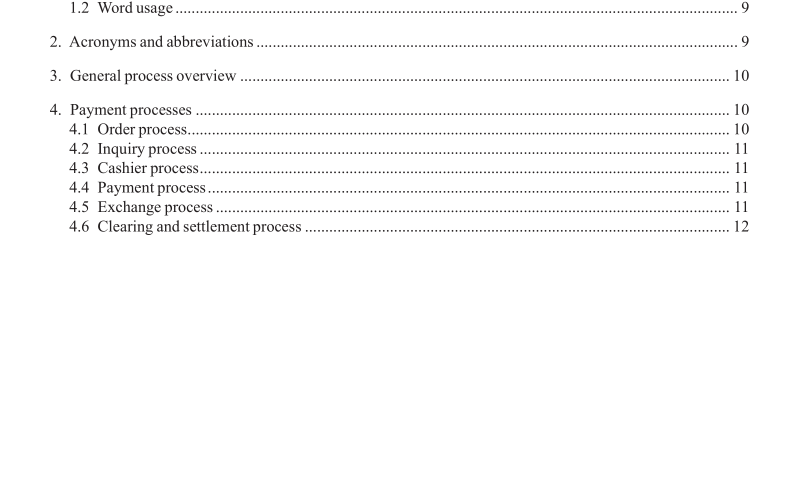IEEE 2143.1-2020 pdf download.IEEE Standard for General Process of Cryptocurrency Payment
4.2 Inquiry process Before collecting money from the customer, the payment platform should query the exchange rate from the exchange platform, then lock the exchange rate and quote to customer. In case the payment currency is not the same as the quote currency, the merchant should request the real-time exchange rate between the quote currency and payment currency from the exchange platform.
To support all payment currencies, the exchange platform should list every exchange rate it supports. Because the exchange rate fuctuates in real time and the customer needs an accurate and stable payment amount, the exchange rate should be locked for a while before the next exchange rate refresh. The generally employed locked exchange rate is calculated as the real-time exchange rate plus a spread according to the volatility. After calculating the payment amount according to the payable amount and locked exchange rate, a stable price quote is sent to the customer from the cashier.
4.3 Cashier process
Cashier is used to display order and payment information to the customer. According to different payment scenes, cashiers show in different forms and may be provided by the payment company or the merchant. Cashier generally includes order information, payment amount, payment method, effective payment time, etc. 4.4 Payment process There are two methods of cryptocurrency payment: on chain transfer payment and wallet balance payment. With on chain transfer payment, customers use external wallet to transfer a crypto to quick response (QR) code collection address through blockchain. Because customers should input the amount of the transfer and miner’s fee, the payment platform should deal with the abnormal situations such as excessive transfer, insuffcient transfer, overdue transfer, etc. Also, any received cryptocurrency should be approved by the risk control module with know your transaction (KYT) and anti-money laundering (AML).
For illegal cryptocurrency or transactions, the payment platform will put the digital currency into a dispute account and notify the customers of failure status and reason for failure. If there is any objection, customers can declare legitimacy to the payment company. The cryptocurrency will be returned to customers after approval, otherwise it will be handled by a regulatory authority. With wallet balance payment, customers use an internal wallet to pay. The precondition is that the payment company can provide customers with an open wallet service that the customers can recharge at will after passing KYC audit. Recharge must be approved by the risk control module with KYT and AML. During the process of wallet balance payment, customers should only input an account password. Wallet balance payment is simpler for customers to use but requires customers to trust the payment company; on chain is safer than wallet balance but is more complicated for customers to use.
4.5 Exchange process The payment company converts received cryptocurrency into quotation currency through an exchange platform. The difference between exchange rate and lock exchange rate can cause exchange gain or loss of a payment platform. A special exchange account may be established. The exchange gain from payment will be deposited into the account. On the other hand, the exchange loss will be withdrawn from the account. The account sets the received amount equal to receivable amount. Then the status of the order changes to pending clearing.
4.6 Clearing and settlement process
When the order whose status is pending clearing is charged and cleared, the status of the order changes to pending settlement. Then the funds will be settled to the merchant according to the agreed settlement cycle. Generally, funds are settled to the wallet account of the merchant frst, then the merchant is able to withdraw as they wish.
Funds can also be settled directly to the merchant’s independent wallet or bank account. The former settlement is more fexible. Because each withdrawal will be charged, the merchant can fexibly arrange withdrawal frequency according to the settlement amount.IEEE 2143.1 pdf download.IEEE 2143.1-2020 pdf download
IEEE 2143.1-2020 pdf download

Leave a Reply